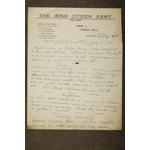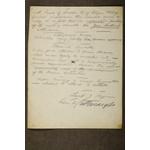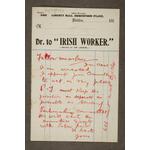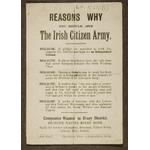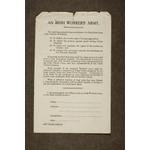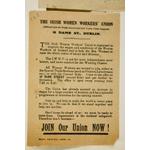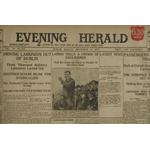Those that set the stage
Jim Larkin and the Irish Citizen Army
Larkin contributed indirectly to the Rising by highlighting the lack of social justice and the plight of workers in the current system. He also made a direct contribution by establishing the Irish Citizen Army.
James (‘Big Jim’) Larkin (1874-1947) was born in Liverpool of Irish parents. He worked as an organiser for the National Union of Dock Labourers in Liverpool and from 1907 to 1909 in Belfast. The Belfast branch was badly organised and bedeviled by sectarianism. By means of his organisational ability and fiery oratory Larkin revitalised the union. When the employers attempted to curb its power by means of a lockout and the use of ‘blackleg’ labour, the British leadership of the union capitulated. Larkin was transferred to Dublin, where he established the National Union of Dock Labourers.
Larkin’s militant approach to labour relations in Dublin resulted in his suspension by the union leadership. He then formed the Irish Transport & General Workers Union. In May 1911 he published the newspaper the Irish Worker, which savaged capitalism, imperialism, employers and the Irish Parliamentary Part, being eventually suppressed for its anti-war policy. His use of strikes brought him directly into conflict with employers. In 1913 in response to his demands for discussions on wages and conditions, almost four hundred employers combined as the Employers’ Federation. The Federation organized the lockout of those workers who would not undertake not to join a union. Over 20,000 workers (with 80,000 dependants) were involved. There was considerable strife, including a notorious baton charge by police on workers and by-standers on O’Connell Street. Larkin was imprisoned for a period.
On 19 November, 1913 Larkin and James Connolly established the Irish Citizen Army as a force to protect workers from the excesses of the Dublin Metropolitan Police. It had a membership of about 350, the majority being members of unions. The force had a distinctive uniform and trained openly; some arms were secretly acquired and held at the ITGWU headquarters at Liberty Hall, near the Custom House. Following the capitulation of the workers and Larkin’s departure for the United States early in 1914, the ICA remained in existence. Connolly acted as commandant; at a later stage Michael Mallin, who led the force in the 1916 Rising, became chief of staff.




